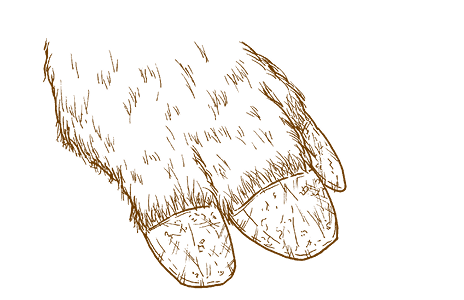
Malayan Tapir
Tapirus indicus
(tay-peer-us in-deek-us)

It may look incredibly strange, but the Malayan tapir’s thick, trunk-like nose is a truly handy adaptation. Perfect for plucking leaves off trees, it also acts as a built-in snorkel when a tapir takes a swim.
The tapir’s black-and-white colors also serve a purpose. These animals are mainly nocturnal (they’re most active at night), and this coloration helps them blend in with the tree trunks as they roam through the forest looking for food.
The Malayan tapir is the largest species of tapir in the world, weighing an average of 605 pounds (275 kg)—but they can weigh as much as 1,190 pounds (540 kg) and grow to lengths of 8 feet (2.5 m)!

Where They Live
They’re native to parts of Malaysia, Indonesia, Thailand, and Myanmar, and since they love to wallow in pools of water to cool down, they can be found in lowland habitats. They move to hilly forests for the rainy seasons. Tapirs usually live alone, though mothers and their young will live together for up to eight months.

What They Eat
The Malayan tapir dines on grass and the leaves, fruits, and flowers of small trees.
Close Relations
Its nose looks a little like an elephant’s trunk, but the tapir’s closest relatives are actually the common horse and the rhinoceros. Both rhinos and tapirs have three toes on their back feet!
Conservation Status
Endangered
Tapirs are seriously threatened by habitat loss as people clear land to make room for palm oil plantations and other industries. Plus, as deforestation causes other species to die out, tapirs are being targeted by new predators who can’t find enough of their usual prey. Humans also hunt tapirs, even though it’s illegal.
Fun Facts
